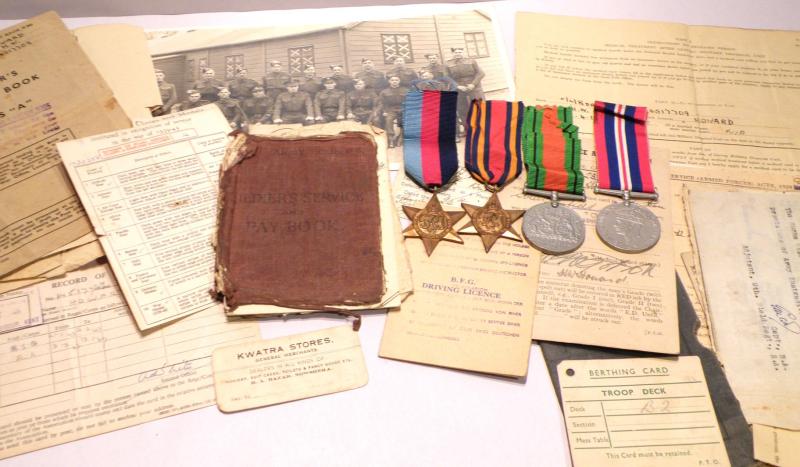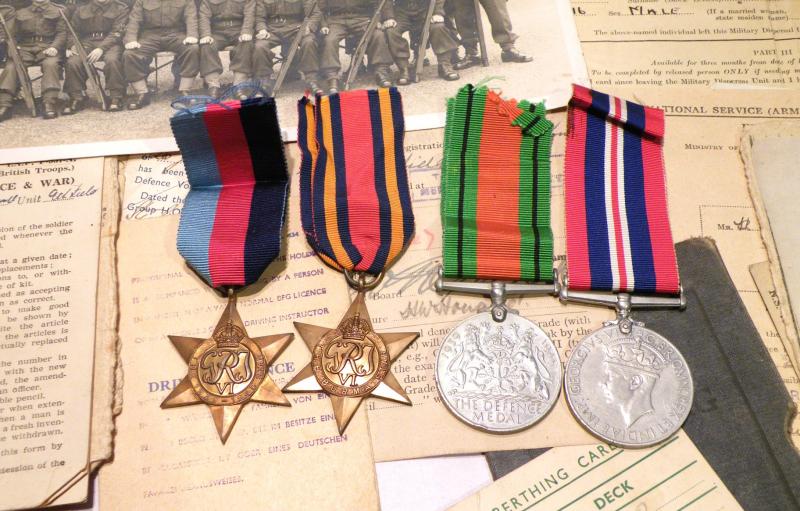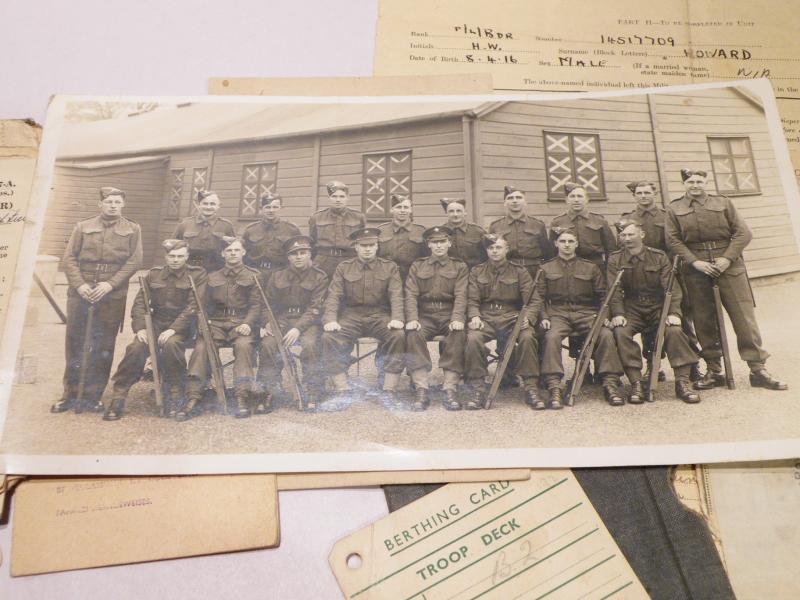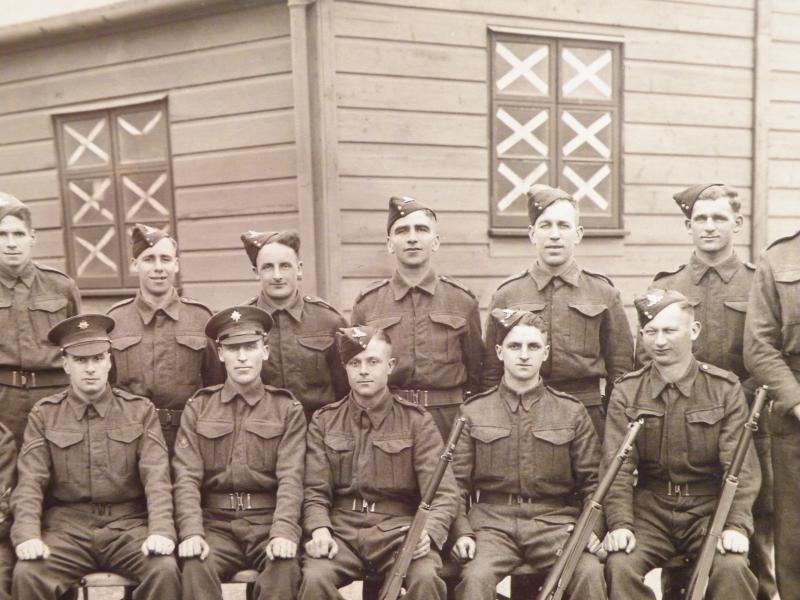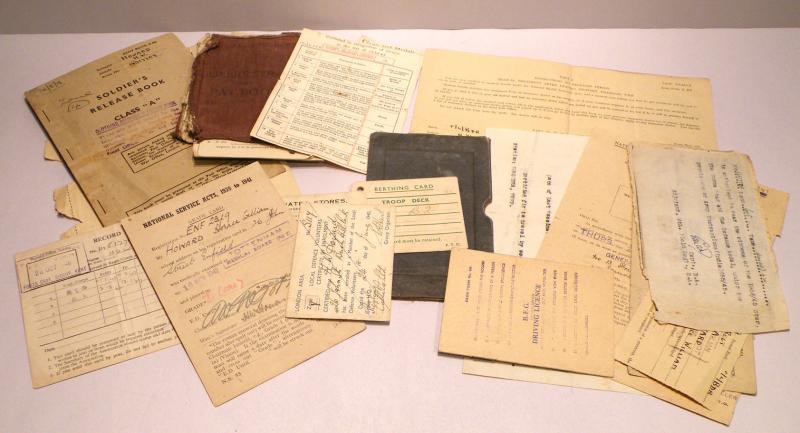WW2 Medal Group & Effects to Howard 9th Field Reg RA
An interesting lot including 1939/45 star, Burma star, Defence and 1939/45 war medal, various original paperwork and insignia belonging to 14517709 Bombardier Horace William Howard Royal Artillery.
Horace W Howard was born in Enfield Middlesex on 8th April 1916 and before the war he was employed as a Mill Hand at the Compound Rubber and Cable Company. He enlisted or was drafted into the Army in January 1943 and served with the general Service corps until his transfer to the Royal Artillery on 2nd March 1943 in the Ahmednagar area India, with the 9th Field Regiment RA, part of the 39th Indian division, a training division, training for Jungle warfare. In August 1943, with the men now ready and acclimatised they were transferred to the 20th Indian division in Ranchi, India. They took part in the Battle of Imphal, near the capital of the state of Manipur in Northeast India from March until July 1944. At the start of the Battle, the 20th Indian Division was deployed forward to Tamu in the Kabaw Valley. To avoid being cut off, it retreated to the Shenam Saddle in the hills surrounding the Imphal Plain. Because the 17th Indian Infantry Division was in difficulty in its sector, the 32nd Brigade was temporarily detached to it. With other detachments, the 20th Division was reduced to only five battalions, to defend the Saddle against the Japanese Yamamoto Force. During April and the first part of May, the division held the saddle against attacks by infantry, tanks and heavy artillery. It was then relieved in place and ordered to counter-attack, north-east from Imphal to Ukhrul. The monsoon had broken and movement was very difficult. After several Japanese counter-attacks, at the start of July the division was transferred to the 33rd Indian Corps and slowly eliminated large numbers of Japanese in and around the village, which had been made into a Japanese communication and logistic centre.
During the remainder of the monsoon, the division rested around Dimapur. As the monsoon ended, it moved into a bridgehead across the Chindwin River at Kalewa. It attacked southward on 4 December and cleared Japanese rearguards from Monywa. On 13 February 1945, the division made a crossing of the Irrawaddy River 20 miles (32 km) west of Mandalay. The boats used were leaky and other items of equipment already worn out. The first precarious footholds were counter-attacked every night for a week but eventually linked up into a solid bridgehead. On 13 March, the 20th Division attacked southward, gaining immediate success against the understrength Japanese 31st Division. A column formed from the divisional reconnaissance unit and an attached tank unit, known as Claudecol, reached far into the Japanese rear, before turning north and mopping up the disorganised enemy.
In August 1945, after the Japanese surrender the Allied South East Asia Command (SEAC) area was expanded to embrace several countries including French Indochina. While Chinese Nationalist troops occupied the northern part of the country and the division occupied the southern part in Operation Masterdom. The division was to release former Allied prisoners of war and disarm and repatriate Japanese units. Later, the division was instructed to hand over to the returning French regime, before returning to India, where it was transferred to the Central India Command. After the end of the war the 9th Field Regiment RA became 23rd Field Regiment RA in April 1947, Horace Howard was discharged on 12th January 1947.
The medals are in excellent condition and look as if they have never been mounted or worn. Some of the original paperwork is a little scruffy.
Code: 30660
145.00 GBP

